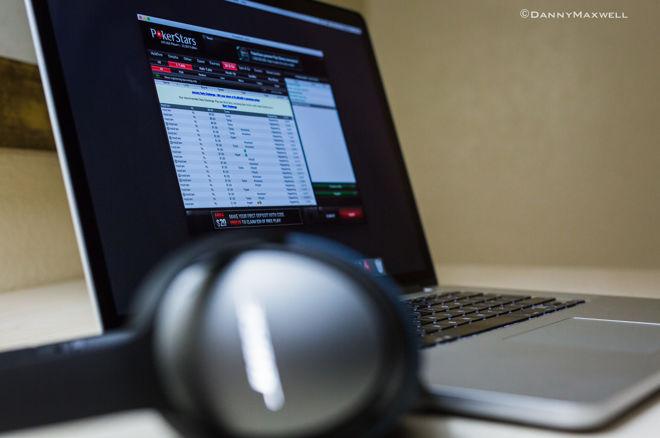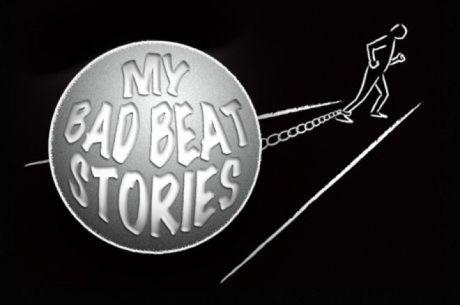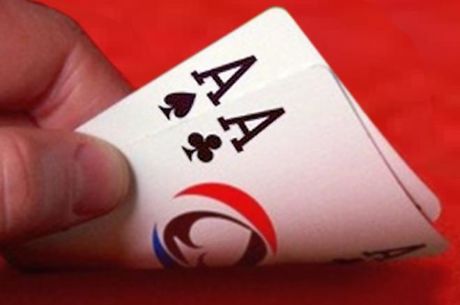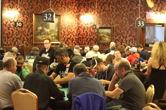Hand Analysis: You Can Fold a Full House

No two pair are the same and the same could be said for a full house. Therein lies the difficulty with regarding your hand in terms of absolute strength. Hand reading and discipline is so often about internalizing the lessons of relative hand strength.
The following hand, played for real money on an virtual internet table, is a good example of the difference.
Bloating the Pot
This online poker hand occurred at the 100NL ($0.50/$1) 6-max. Zoom tables and involved two players in the blinds who each had about $190 to start.
The small blind raised it up to $3 and faced a standard three-bet to $9 from the big blind. Not satisfied with the price of poker (who is these days?), the small blind then made it $28. This is an oversized four-bet and liable to clear out all sorts of riff-raff.
All Ranges and Sizes
The big blind in this instance called, an action that should indicate serious strength. Your opponents' preflop continuing ranges will almost always be proportionate to the size of the bet they face.
If this big blind had faced a four-bet of $15, he would have continued more or equally as often than when facing three-bets of $16, $17, $18 and so on.
The rate at which larger sizes encourage your opponents to fold may not hold steady as the price goes up, especially if your particular opponent is a wild one. In any case, we can rest assured that this large four-bet size had some effect, even if we are looking at the hand readlessly.
Dry Board Dampens, But Dries Again
The small blind continued to fire at the pot on a 10?8?10? flop, betting $18 into just over $56.
On this board, facing this size, it is hard to pick hands one might suppose the big blind to both call such a large four-bet and then fold on this flop. Surely this bet size could fold out Ax9x-offsuit or AxJx-offsuit, but would those hands have made it to the flop for $28? Not that often.
The big blind called once again.
The J? turn card developed some real possibilities for draws, but both players were content to check it through. This rules out some possibilities from both sides, but the chances of a slow play from the big blind remained live. Maybe the small blind didn't want to bet and fold a draw like KxQx, but it is hard to imagine the SB checking this card with 9x7x-suited or Qx9x-suited.
The river 10? dried the board right out, making the final board 10?8?10?J?10?. With trips on the table, the potential for a full house obviously goes through the roof.
The small blind led out $48 into a nearly $90 pot. Then the big blind immediately shoved for $97 more.
Hoping to Chop
We'll rarely find the big blind turning up with a bluff in this situation, online or otherwise. After all most of the BB's flop draws made a full house, with the exception of 7x6x. Therefore he would have to be turning something he called that large four-bet with into a bluff �� something like AxQx or KxQx that took a card off on the flop after facing a smaller bet size.
It is reasonable to believe such hands could make it to this river as played, but not that the big blind would play this river this way. Regulars and amateurs alike rarely check back a turn to bluff-shove a river that makes their opponent many full houses.
Meanwhile the small blind almost certainly has something, since few players would both slow down with a draw on the turn to bluff this exact river card.
So, the question arrives. What exactly should the small blind do if he has K?J? (which he did)? I believe the answer is fold.
See, it all goes back to preflop. The stacks are deep to start the hand, that's true, and that fact should incentivize the out-of-position player to make a larger four-bet with his entire four-betting range. But this much larger? There is a difference of significance between $28 and $25. Such a large size could clue the big blind to call with pocket jacks, queens, kings, and aces, satisfied that more large bets may be placed subsequently by the small blind.
And what is the worst hand, assuming they are not bluffing, that the big blind could do this with for value? A queen that took the flop off, suited hands like QxJx, Qx9x, Qx8x? Remember JxJx also possible here and beats queens, kings, and aces. Quads are not impossible, either.
The truth is, not all full houses are made equally here and king-jack in this spot can only beat a bluff.
We have a lot of factors adding up to a fold for the small blind's now meager K?J?, starting with preflop and ending with this river shove. He didn't fold however, and saw two unsurprising cards in big blind's hands �� A?A?.









